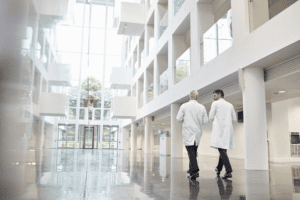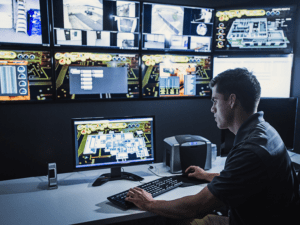This audio was created using Microsoft Azure Speech Services
At my last HAAHE (Houston Area Association of Healthcare Engineers) meeting I watched a dynamic presentation by Susan B. Laughlin, FASHE, CHFM, CHSP who spoke about the most frequently cited Joint Commission deficiencies. More recently, I read her article in the Codes and Standards section of Health Facilities Management Magazine that reinforced those same concepts and highlights The Environment of Care and Life Safety standards that appeared among the 10 most cited standards during Joint Commission hospital surveys in the first half of 2011.
Then it occurred to me, that healthcare organizations might not realize how to overcome some of these frequently cited deficiencies.
Regarding EC 02.05.07 – The organization inspects, tests, and maintains emergency power systems.
Ms. Lauglin commented “Usually health care organizations have their emergency generator testing pretty much in order. Occasionally there are a few things that go wrong, like running for not quite 30 minutes or being a little careless on the 20-to-40-day intervals each month. When something goes wrong with the generator itself, it is essential to document what was done to correct the problem and then perform the retest. If, at any time during that period, patients would be at risk if the normal electrical power failed, interim arrangements must be made for their protection.”
A white paper entitled, Automating Emergency Power Supply System Testing in Hospitals addresses this very issue and makes recommendations for streamlining, automating, and documenting your all testing.
She also states, “there are a couple of other sticky wickets in this standard. Battery-operated egress lighting is one of them. This requires a 30-second monthly test and a 90-minute annual test. The annual test may be replaced by a documented annual battery replacement program, with 10% of the lights still tested for 90 minutes. Here is another occasion when facility professionals must be sure to remember remote sites.”
Healthcare organizations can solve the issue of controlling emergency lighting with a centralized, self-contained solution for emergency egress lighting control. For example, with a factory-assembled circuit breaker panelboard with onboard automatic load control relays, such as Schneider Electric’s emergency lighting control panelboard, facilities can streamline operations, reduce costs, improve sustainability, and use advanced lighting control technologies.
Regarding EC 02.06.01 – The organization establishes and maintains a safe, functional environment.
Thirdly she notes, “temperature and humidity levels in the ORs, delivery rooms, central sterile, endoscopy, cath lab and sub-sterile storage areas are being evaluated closely by Joint Commission surveyors, along with appropriate pressure differentials….Facility professionals should be sure that the temperature and humidity are recorded at least daily….If documented by a building automation system, verify that a retrospective log can be produced. Verify that pressure differentials are checked at least annually.”
Hospitals need a building management system that can properly and easily record, analyze, and adjust temperature and humidity levels, as well as provide the data you need for regulatory compliance documentation and analysis of your temperature and humidity levels website.
What steps does your organization take to meet regulatory compliance? Share your comments below.




Conversation
Yves Renaud
12 years ago
Excellent, very interesting and to the point!!